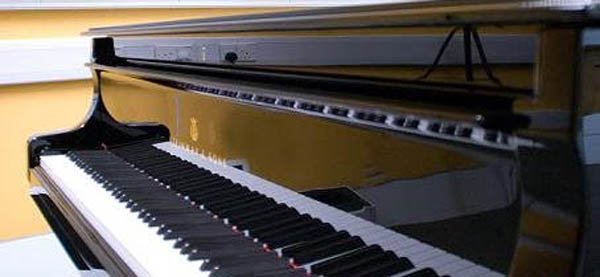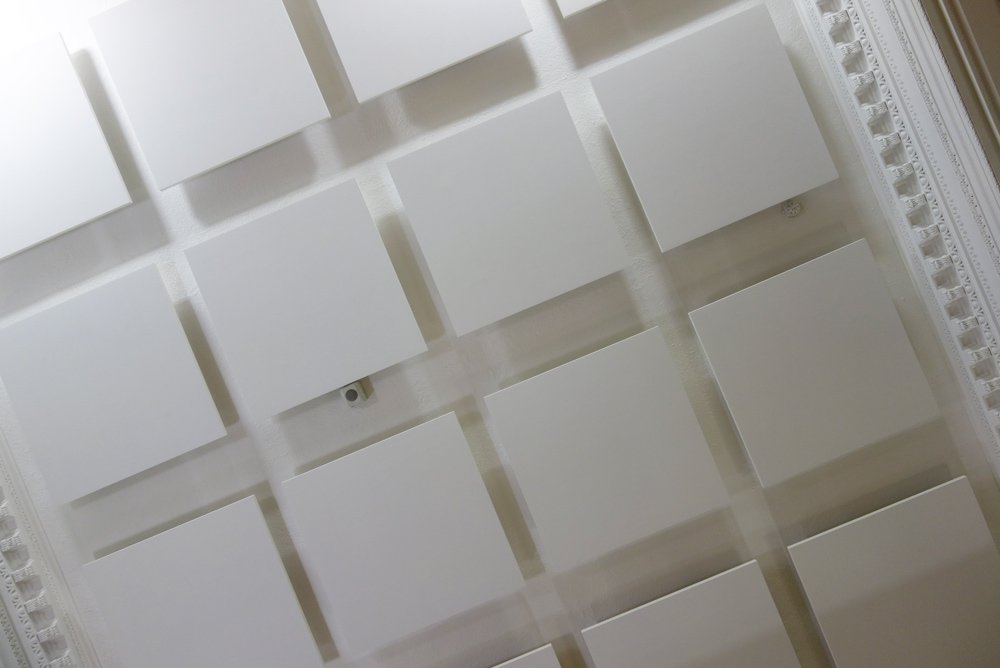
Guide to Room Acoustics
Often perceived as a ‘dark art’, the subject of room acoustics can be quite daunting to anyone approaching it with little or no knowledge. Whilst it’s not untrue that the subject has some complex scientific and mathematical aspects, there are also some basic principles that can be applied in order to create a better understanding about how sound works and why you may have a problem in your particular space. We aim to use this page to demystify some aspects of acoustics – to show you some of the basic theories on acoustics and give you a bit more of an understanding on how to solve your acoustic problem. Our comprehensive acoustic treatment services can also help transform your space into one which is pleasant, comfortable and more productive.
The Benefits of Good Room Acoustics
Increased Concentration
When lots of sound is travelling to the ear from different directions and a person cannot determine the source, the result is disruption which has a massively detrimental effect on concentration. Good room acoustics ensure that noise is absorbed before it hits a person’s ear, guaranteeing that there aren’t any disruptive effects on concentration.
Effective Communication
Effective Communication relies on good room acoustics. When a room suffers from a problem of excessive noise, the sound of the voice gets lost which results in poor speech intelligibility. Similarly, if lots of hard surfaces are causing sound to bounce around the room and cause an echo, the reflections inundate each other and make speech difficult to hear and understand. A room with good acoustics controls the noise levels so that the sound and clarity of the voice is not lost.

Acoustic Comfort
Noise can rise to uncontrolled levels when lots of people are talking and moving or there are too many noise sources and not enough sound-absorptive materials in a room. Good acoustics ensure that noise is absorbed at the right level to afford a comfortable environment in which to work, relax or listen. A feeling of luxury or cosines can be a component of good acoustics.
Increased Productivity
It’s no surprise that excessive noise and poor acoustics can have a detrimental effect of productivity. Not only does it affect communication and concentration, unwarranted sound can also effect morale and make workers less productive in their roles. ‘Noise, in addition to causing nuisance and disturbance in an office environment, is a primary cause of reduction in productivity’ (Abbott, 2004). A comfortable acoustic environment is crucial to productivity and morale, particularly in working spaces.

Privacy
Whether it’s a private doctor’s office, an open plan office, or a restaurant, a certain degree of confidentiality is important in most room types. When there are no sound absorptive materials in a room, privacy between room users or between adjoining rooms can be seriously compromised as there is nothing to stop voices from travelling. Good room acoustics are essential to ensuring privacy.
Proper Functioning of AV/VC equipment.
Audio visual, video-conferencing and tele-conferencing equipment is extremely sensitive to the problem of poor room acoustics and in particular high reverberation. Expensive AV/VC equipment can seriously underperform in a room where there are no acoustic materials to absorb sound bouncing off the walls and other hard surfaces. The result is bounce-back speech carrying through the equipment after the real-time speech has been heard. This makes any communication particularly difficult for the audience to hear as the original message can be shrouded in echo. Good room acoustics are essential to ensuring soundwaves are appropriately absorbed to reduce echo.
Lots of Hard Surfaces
Hard surfaces such as bare floors and walls and hard furniture such as wooden or metal tables, chairs and counters all have a detrimental effect on room acoustics. The harder surfaces in a room, the greater the need for absorption, this is because sound waves are not absorbed by hard materials but instead bounce off these reflective surfaces, creating a noisy and echoey environment.

Multiple Noise Sources
Many noise sources combined contribute massively to poor room acoustics. People talking & moving plus any number of environmental noises such as phones, roads, machinery, air-conditioning & music can combine to create a noise problem. The Cocktail Party Problem is a good example of this – it refers to the difficulty of understanding speech in noisy social settings
High Ceilings
Higher ceilings increase volume in a room meaning sound is lost in the ‘dead space’ above our heads. They also result in higher reverberation times as sound waves have to travel a long way before they are reflected by a hard surface. Both of these reasons combined mean that high ceilings are bad for room acoustics.
The Most Common Causes of Poor Room Acoustics


Our Rules of Sound Absorption
Whilst every room is different and we treat every project on its own individual merit, there are a few simple principles we work with to ensure the best level of acoustic comfort is achieved with every project we work on. Whilst not all the points below are possible on every project, we aim to meet as many of the requirements as possible.
- Calculate how many square feet of coverage is required to get optimal acoustic comfort. There’s no need to cover every square inch of your room in acoustic materials – we calculate exactly what you need so that there is no waste when it comes to materials or your budget.
What is Reverberation Time (RT)?
Reverberation time is the most important factor when assessing a room with a noise problem. RT is defined as the time it takes, in seconds, for the sound pressure level to drop by 60dB after the source has stopped generating the sound. A room with a high RT generally has a problem with noise as sound travels for long distances without being absorbed. Rooms with a high RT almost always have an issue with echo as sound is reflected from hard surface to hard surface.
Our Guide to Reverberation Times
In the interior acoustics industry, there are surprisingly few guidelines regarding the levels of noise in different room environments. Apart from BB93 regulations, which set out standards for acoustics in schools, there aren’t any other guidelines that deal specifically with reverberation times. After years of experience of working with a plethora of noise problems, we now work within our own set of RT guidelines which enable us to assess and solve noise problems in a wide range of room types. The Resonics recommendations for RT in different room types are shown below.
Sound Absorption and Sound Proofing – What’s the Difference?
We are often approached by individuals or companies that are suffering from a noise problem looking for a ‘sound proofing’ solution. What they are really looking for most times is a sound absorbency solution. So what’s the difference? Here is our summary to help you recognise the difference between the two and some of our key rules when it comes to sound absorption.
Sound Absorption
Sound absorption is at the heart of what we do – it deals primarily with the problem of high reverberation times (RT) and echo. Sound absorptive materials work to absorb noise travelling and bouncing between surfaces. Sound absorption has a huge impact on the room user’s acoustic experience of a space. Primarily it works to reduce the RT in a room and improve the user’s experience by improving communication, privacy, speech intelligibility and making the space acoustically comfortable.
Sound Proofing
The principles of soundproofing or sound insulation are markedly different to sound absorption. Whilst sound absorption deals with the sound within a room and measures taken to reduce it, soundproofing insulates a space with materials so that sound cannot leave a space (or enter from elsewhere). Soundproofing does not change the room user’s acoustic experience of a room but it does give more privacy between rooms and provide better concentration in the room in question by blocking external disturbances.
Absorption Class – Classification of sound absorbers into Sound Absorption Classes A-E. Class A absorbers affords 90% absorption, Class B 85% and so on.
Acoustics – The study of sound. In terms of room or space, the term refers to the properties or qualities of a room or building that determine how sound is transmitted in it.
Articulation Class (AC) – Indicates the speech privacy performance of a ceiling in an open plan environment, such as a space divided by half height screens. A rating below 150 indicates poor speech privacy performance; a rating above 180 indicates good performance.
Articulation Loss of CONSonants (%-Alcons) – Alcons is the measured percentage of Articulation Loss of Consonants by a listener. % Alcons of 0 indicates perfect clarity and intelligibility with no loss of consonant understanding, while 10% and beyond is growing toward bad intelligibility, and 15% typically is the maximum loss acceptable. Consonants play a much more significant role in speech intelligibility than vowels. If the consonants are heard clearly, the speech can be understood more easily.
Background Noise – An important concept in setting noise regulations, background noise is any environmental noises such as speech, scraping chairs, humming ventilation, traffic, machinery and equipment, sound from corridors, adjoining rooms, playgrounds.
Flutter echo – Occurs when noise bounces in rapid sucession between parallel surfaces (walls or floors and ceilings) in a room.
Frequency (f) – Measured in Hz (hertz), frequency is the rate per second of a vibration constituting a wave. The higher the value, the lighter the tone (bass – treble). The frequency of speech lies primarily between 125 and 8000 Hz, while audible sound lies between 20 and 20 000 Hz.
Cocktail Party Problem – Refers to the difficulty of understanding speech in noisy social settings. As people in a room talk louder and louder until they are shouting, there comes a point when the noises inundate each other and no-one can understand what each other is saying.
Noise – A sound, especially one that is loud or unpleasant or that causes disturbance. Noise is unwanted sound.
Noise Reduction Coefficient (NRC) – The Noise Reduction Coefficient (NRC) is a scaled representation of the amount of sound energy absorbed upon striking a particular surface – an NRC of 0 indicates perfect reflection; an NRC of 1 indicates perfect absorption. Due to the formulas used values larger than one are possible, and common. NRC is most commonly used to rate general acoustical properties of acoustic ceiling tiles, baffles, and banners, office screens, and acoustic wall panels.
Privacy – Acoustic Privacy or Speech Privacy between working places in open plan offices is expressed with the Articulation Class (AC).
Rapid Speech Transmission Index (RASTI) – RASTI is a way of measuring speech intelligibility. It is measured at two frequencies, 500 and 2000 Hz, by placing a loudspeaker, which transmits sound from the location of the person speaking, and a microphone where the listeners are situated. (See also Speech Transmission Index – STI).
Reverberation Time, (T or RT) – The time it takes for the sound pressure level to fall by 60 dB after the sound has been turned off. Measuring the reverberation time allows us to calculate the total sound absorption. The reverberation time varies according to the frequency.
Sabine’s Formula- The physicist Wallace Clement Sabine (1869-1919) created the well-known Sabine formula (T=0,16V/A), showing the relationship between reverberation time (T s), room volume (V m³) and the amount of absorption (A m²).
Sound Absorbers – Materials that absorb sound energy and convert it into other forms of energy. They improve room acoustics by removing sound reflections, thus reducing the noise and the reverberation time.
Sound Absorption – Means that sound energy is converted into mechanical vibration energy and/or heat energy. Sound absorption is expressed as the sound absorption coefficient α or the sound absorption class (A-E) according to EN ISO 11654 or NRC/SAA according to ASTM C 423.
Sound Absorption Average (SAA) – Single value for the sound absorption according to ASTM C 423, including the third octaves in the frequency range 200-2500 Hz.
Sound Absorption Class – Classification of sound absorbers into Sound Absorption Classes A-E, according to EN ISO 11654, including frequencies 200-5000 Hz.
Sound Insulation – The ability of a building element or building structure to reduce the sound transmission through it. The sound insulation is measured at different frequencies, normally 100-3150 Hz. Airborne sound insulation is expressed by a single value, Dn,c,w ,Rw or R’w. Impact sound insulation is expressed by a single value Ln,w or L’ n,w .
Sound Pressure Level (dB) – The pressure variations caused by sound waves in air are called sound pressure. The lowest sound pressure level which can be heard is 0 dB, known as the hearing threshold. The highest level which can be tolerated is called the pain threshold and is around 120 dB.
Sound Strength (dB) – Measured in dB (deciBel). dB is measured at different frequencies. dB(A) (or LpA) is a single-figure value used to describe the total sound strength for all frequencies in a way similar to the sensitivity of the ear. dB(C) (or LpC) particularly focuses on low frequencies and better reflects how a sound is perceived by people with impaired hearing.
Speech Intelligibility – Speech Intelligibility refers to how clearly speech can be heard and understood. It is mostly dependent on three things; the level of background noise, reverberation time and the shape of the room. Different methods are used to evaluate speech intelligibility, the most common ones are RASTI, STI and %-Alcons.
Speech Transmission Index (STI) – Similar to the RASTI method but a more complete form of measuring speech intelligibility by measuring all octave bands in the frequency range 125-8000 Hz.
